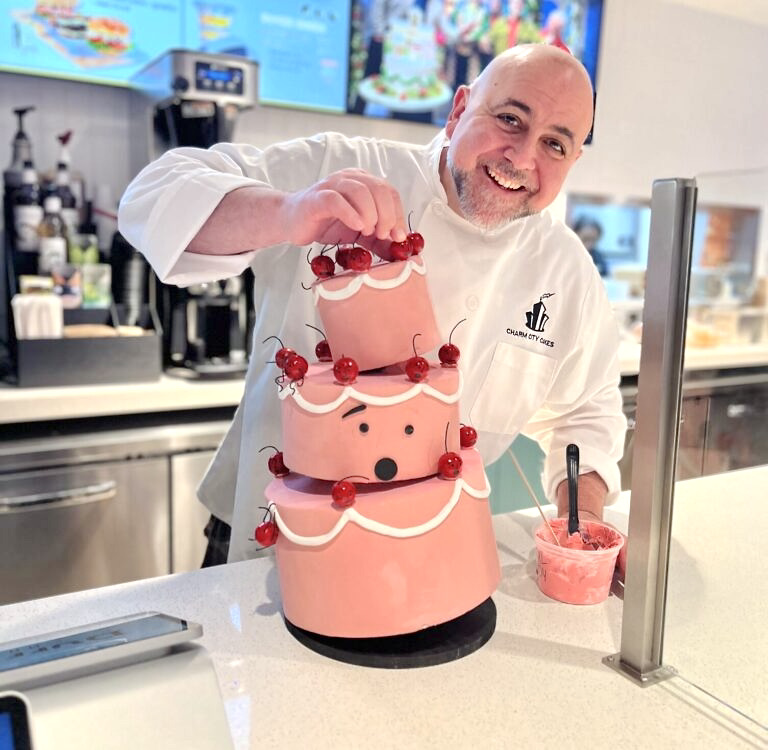
“The hardest thing about abalone farming is thinking you know what’s going on and thinking you have control over the system,” says The Cultured Abalone Farm general manager Devin Spencer. “Yeah, we’re in tanks, and yeah, we’re growing seafood, but it’s farming. Mother Nature is in charge of the system and you’re just here in it.”
The Cultured Abalone Farm was established in 1989 in Santa Barbara, California. The farm produces red abalone (which is native to California) primarily for human consumption, although they also grow abalone that is released into the wild to restore depleted populations.
Many people mistakenly believe that abalone are shellfish like clams and oysters, but actually, abalone are marine snails. Abalone only have one shell, which has a distinctive opalescent interior. Spencer describes the taste of abalone as “a mixture between a scallop and calamari. They’re very similar to escargot in that they taste like what you cook them in.” Abalone can be pan-fried, grilled, or served raw, ceviche-style.
The Cultured Abalone Farm is a full-cycle farm, which means that the abalone are spawned and hatched on-site and raised in tanks for three to five years until they are harvested for market. The three-acre farm raises about a million abalone at any one time and produces approximately 50 tons of abalone per year.

“Abalone farming is mostly cleaning and feeding,” says Spencer. “Everything we do is by hand. All of our sorting is done by hand. We weigh each abalone by hand when we transfer them [between tanks] and separate them into different size classes.”
The abalones’ primary food source is wild-harvested giant kelp, supplemented with native California seaweed grown on the farm. “We want our product to be like you would get it from the ocean,” says Spencer. “We don’t feed them any sort of antibiotics, we don’t feed them any sort of pellets; we want them to be genuine to what you would get if you could wild harvest.”
Sustainability is an important focus for the Cultured Abalone Farm. In order to conserve energy, tank water isn’t chilled or treated, and water is pumped to the highest point of the farm and distributed via gravity.
Another sustainability effort is the farm’s purple urchin program. Although purple urchin are native to California, their population has become unbalanced and the urchin are destroying kelp forests. Purple sea urchins aren’t typically commercially fished since they don’t reliably contain uni, or roe. The Cultured Abalone Farm works with urchin divers to collect purple urchins from the wild, which they then fatten up at the farm to ensure they contain uni and sell for consumption. “We’re hoping to have a little bit of an impact on the overpopulation of the purple urchins,” says Spencer.
Consumers can buy abalone and purple sea urchins directly from the Cultured Abalone Farm’s website. The farm also provides abalone to restaurants, primarily in California but also in the Pacific Northwest and beyond.
Spencer notes that aquaculture, or fish farming, has the potential to make a positive environmental impact. “When aquaculture is done sustainably, it is allowing us to get food out of a system without actually taking food out of nature,” she says. “I’m really excited to be a part of that, to be part of that movement to be able to feed our communities and also sustain natural environments.”
NEXT ON THE DISH








